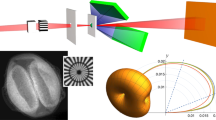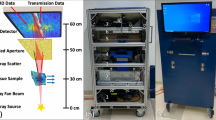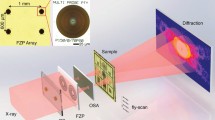Abstract
To obtain the X-ray diffraction pattern of a flat specimen such as is met with in metallurgical practice, the specimen may be mounted in a circular camera and inclined at a small angle to the beam. This is illustrated in Fig. 1. With the usual diaphragm, we have observed that diffraction lines making a small angle with the surface of the specimen are particularly sharp, but become broader as the angle between the diffracted beams and the surface of the specimen increases.
This is a preview of subscription content, access via your institution
Access options
Subscribe to this journal
Receive 51 print issues and online access
$199.00 per year
only $3.90 per issue
Buy this article
- Purchase on Springer Link
- Instant access to full article PDF
Prices may be subject to local taxes which are calculated during checkout
Similar content being viewed by others
References
George, Nature, 136, 180, Aug 3, 1935.
Author information
Authors and Affiliations
Rights and permissions
About this article
Cite this article
STEPHEN, R., BARNES, R. New Technique for Obtaining X-Ray Powder Patterns. Nature 136, 793–794 (1935). https://doi.org/10.1038/136793b0
Issue Date:
DOI: https://doi.org/10.1038/136793b0
This article is cited by
-
A Condensing Monochromator for X-Rays
Nature (1937)
-
New Technique for obtaining X-Ray Powder Patterns
Nature (1936)
Comments
By submitting a comment you agree to abide by our Terms and Community Guidelines. If you find something abusive or that does not comply with our terms or guidelines please flag it as inappropriate.



